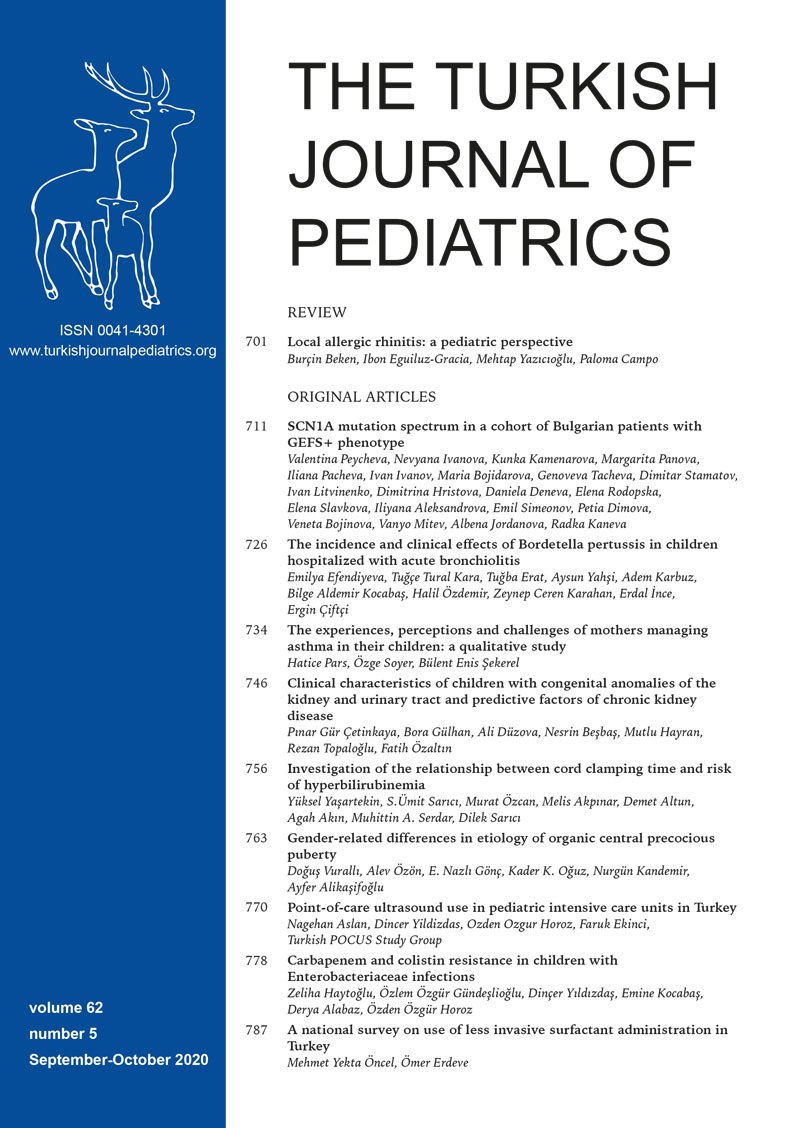Abstract
Background. Central precocious puberty (CPP) is idiopathic in 90% of girls and 60% of boys, while some cases are caused by lesions of central nervous system (CNS), a condition often referred to as organic CPP. We aimed to analyze the etiology of organic CPP in a large cohort of girls and boys and determine gender-related differences.
Methods. Medical files of 256 girls and 120 boys diagnosed and treated for CPP in a single center in the last two decades were reviewed. Patients were classified into four groups with respect to previous history and MRI findings: (1) previously established CNS pathology at the time of diagnosis, (2) novel CNS pathology previously asymptomatic, (3) incidentalomas considered to be unrelated to CPP, and (4) completely normal MRI. Group 1 and 2 were considered as organic CPP whereas group 3 and 4 were considered as idiopathic CPP.
Results. Prevalence of CNS pathology was significantly higher in boys than girls (21.7% vs 6.2%). Previous CNS pathologies such as developmental anomaly of CNS, parenchymal injury, necrotic lesions and hydrocephalus were present in 3.5% of girls and 8.3% of boys. Prevalence of novel CNS pathology as determined by imaging among neurologically asymptomatic patients was 2.8% in girls and 14.5% in boys. The most common novel CNS pathologies in boys were hamartomas (5%) and suprasellar arachnoid cysts (3.3%); which were significantly lower in girls (0.8 and 0.8% respectively). Onset of organic CPP was before six years in girls, and seven years in boys.
Conclusions. Organic CPP was 3.5 times more common in boys compared to girls. It is possible to detect an underlying CNS pathology in one out of every five boys with CPP. Frequency and distribution of organic etiology also differ between girls and boys, hypothalamic hamartomas and suprasellar arachnoid cysts being more common in boys than girls. The likelihood of novel intracranial pathology associated with CPP is quite low in girls with an onset after six years of age and in boys with an onset after seven years of age.
Keywords: central precocious puberty, cranial MRI, etiology, pituitary MRI, precocious puberty
Copyright and license
Copyright © 2020 The Author(s). This is an open access article distributed under the Creative Commons Attribution License (CC BY), which permits unrestricted use, distribution, and reproduction in any medium or format, provided the original work is properly cited.














